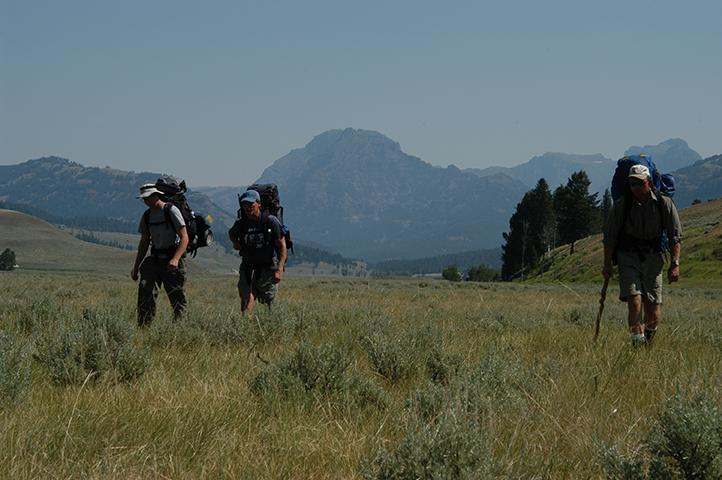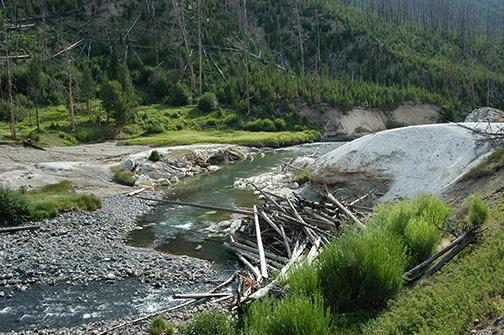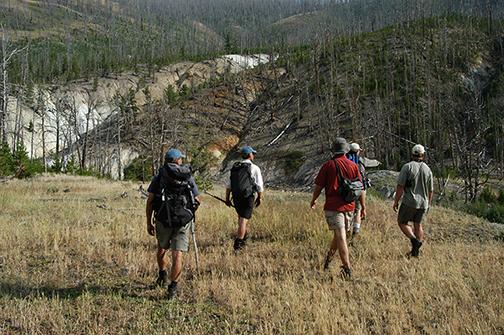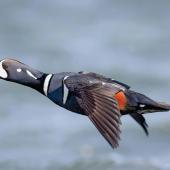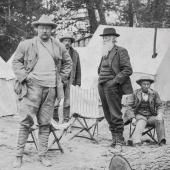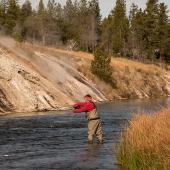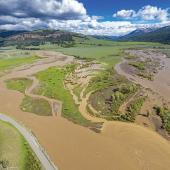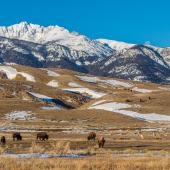Park Professor
Yellowstone Association's summer field courses.
Twelve of us gathered in the Lamar Buffalo Ranch’s main cabin for orientation as the cold ground thawed under the powerful summer sun. We were guinea pigs for the Yellowstone Association’s (YA) new field seminar, “Made for Each Other: Nature's Relationships,” led by naturalist Danielle Oyler. Our three-day course would take us to three different locations in Yellowstone National Park, where we’d explore unique ecosystems and watch for wildlife.
After orientation, Charlie, a delightfully chatty gent from Oklahoma, drove us down Lamar Valley to a pullout, where we hiked off-trail onto the hillside near Specimen Ridge. “Today is an exploration day,” Danielle told us. “We're just going to hike out and observe.” We hadn’t gotten ten feet from the bus before the group barraged Danielle with questions about plants, animals, and the landscape. She patiently answered every inquiry, her Yellowstone knowledge seemingly limitless. We hiked a few miles in, watching pronghorns lounge on the hillside, identifying potential wolf tracks, and looking for signs of bear activity. We stopped for lunch under the cover of tall aspens and enjoyed a panoramic view of the valley before hiking back to the bus. Back at the Ranch, one of my companions, Devin, expressed interest in a fishing trip out to Soda Butte Creek. I felt it would be a great opportunity to see another part of the Park and meet some new people. Devin, his friend Randy, Danielle, and myself piled into Devin's vehicle and headed out. After exchanging condensed life stories, I learned that Danielle had actually grown up in the Park near Mammoth, and Devin and Randy hailed from Ketchum. We reached the parking lot beneath a looming Barronette Peak and hiked out to the water. I gazed up at the rocky mountain as my feet soaked in the frigid current. We headed back to our cozy cabins just before dark as stars began to appear in the sky.
The next morning, we drove to an overlook south of Tower Junction with views of the caldera and large patches of dead trees from the ’88 fires. According to Danielle, this was the most recent major fire that the Park Service left largely untamed, only intervening when structures where threatened – a highly controversial strategy. Next, we piled back into the bus and headed to the Ice Lake trailhead, where we learned how to identify different species of pine trees. Danielle encouraged us to "shake hands with the tree," and I discovered the distinction between spruce and fir trees: one is spikey and one is friendly.
On day three, Danielle informed us we'd be driving to the base of Mount Washburn and hiking up to a lookout. Charlie parked the bus at the busy trailhead and we embarked on our trek. On the way up the mountain, we stopped to observe the endearing whitebark pine. A smile appeared on Danielle's face as she divulged the unique, symbiotic relationship of Clark's Nutcracker – an alpine bird similar to a grey jay – and this particular tree. A short while later and we've arrived at the lookout. To the east, the Grand Canyon of the Yellowstone sprawled into view as the Absaroka Mountains framed the blue sky above. On the way back to the Ranch, we all exchanged emails in an effort to stay connected in the future. Danielle hugged each one of us as we exited the bus, and we promised to stay in touch.
It was more than a polite gesture. Danielle has worked with the YA for over three years and is genuinely dedicated to delivering not only an enjoyable experience, but a level of personal growth and development for each participant: “I hope people who come here take what they've learned and apply it to everyday life.” It definitely worked for me, as I now have a greater appreciation for our natural world. I understand there are so many intricate relationships in nature that significantly affect our environment, each one of them as precious and delicate as the next.
For more information and to book a trip, visit yellowstoneassociation.org.

